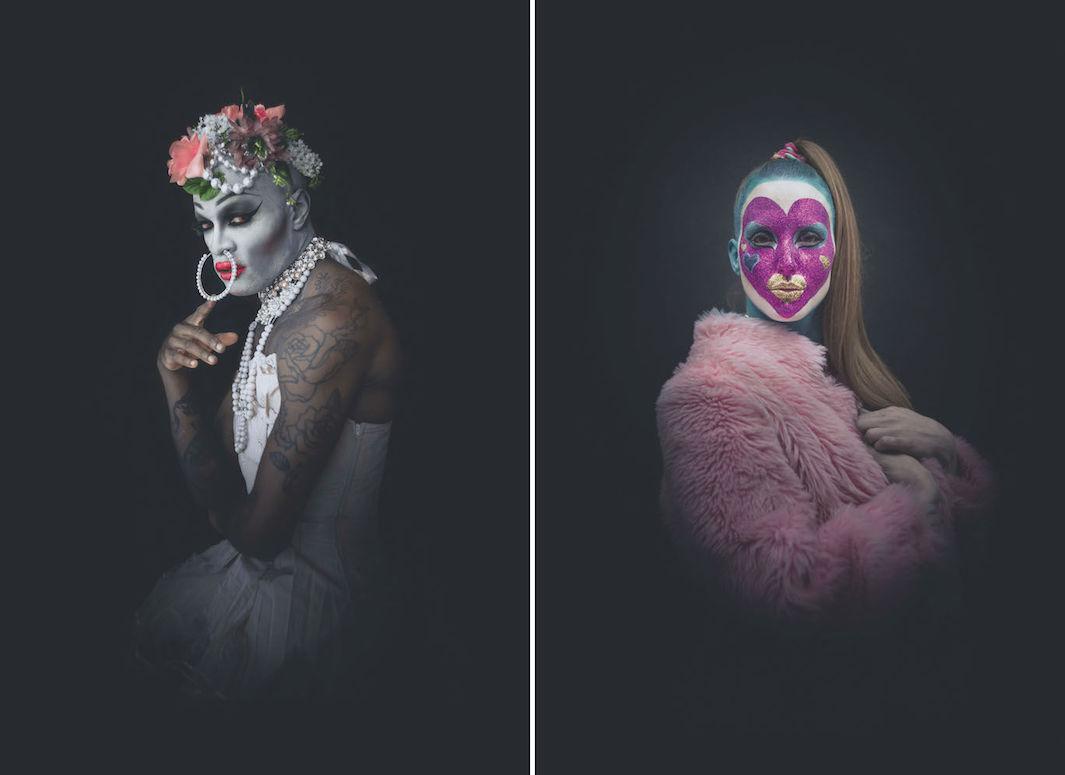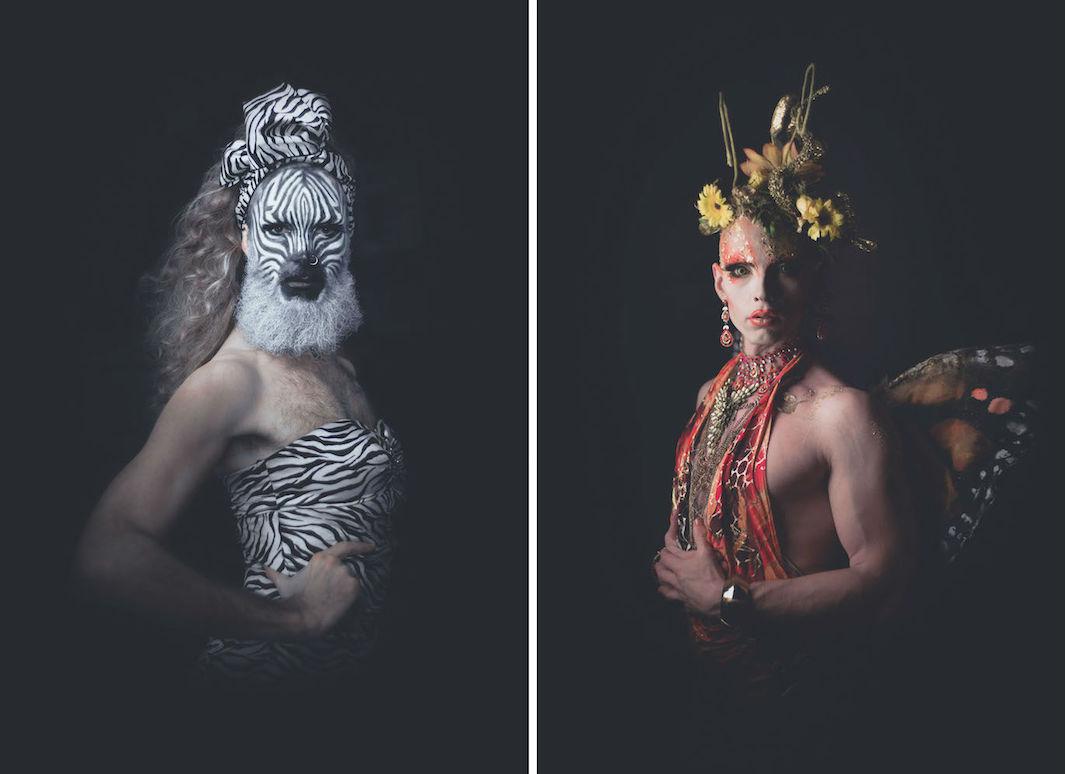As the sun goes down, London’s “Night Flowers” start to wake up.
Who are Night Flowers? According to Damien Frost, who’s borrowed the term from performer Maxi More, they’re “a loose-knit community of drag queens and kings; club kids; alternative queer, transgender, and gender-queer people; goths; artists; and cabaret, burlesque, and fetish performers” who bring the beautiful and the bizarre to the city’s streets.
In 2014, Frost, an artist and graphic designer, had the goal to set out after work with his camera and make a photo of an interesting Londoner every day of the year. On late-night strolls through SoHo, where he works, and East London, where he lives, he started encountering the elaborately dressed people who’ve come to make up his book, Night Flowers: From Avant-Drag to Extreme Haute-Couture, which Merrell Publishers released in March.

Copyright Damien Frost

Copyright Damien Frost
“In a world where everything is packaged according to age-old market demographics, it’s easy to regard these ‘Night Flowers’ as being the torch-bearers of an anti-establishment ethos of ‘true punk,’ as much as they are the precursors to many fashion and pop-culture trends. There’s a transgressive spirit of rebellion that’s inherent in many of the looks, whether it’s rebelling against binary gender roles or simply what’s viewed as ‘normal’ or in good taste,” he wrote in the book’s introduction.
Night Flowers struck Frost as living works of art, and he was intrigued by the way they used the street as their own personal gallery space. They also reminded him of the characters Frost used to encounter when, as a younger man, he used to go to goth clubs and raves.
“It might be that part of the reason I’m interested in these subcultures is that I regret not taking photos and documenting the scene when I was actively going out,” he said via email.

Copyright Damien Frost
Initially, Frost incorporated the surrounding environment in his portraits, but he eventually decided to isolate his subjects in darkness to better highlight their distinctive looks. Frost often found Night Flowers while walking or biking on the streets, and though his encounters could be brief and one-time-only, they sometimes evolved into friendships and multiple shoots over time. As he came to be more familiar with the community, his photography took him beyond the street to the clubs and dance floors his subjects frequented.
Unfortunately, the forces of gentrification mean that many of those places are threatened with closure or have already shut their doors. But Frost believes that Night Flowers will always manage to bloom, even if it requires taking root in new soil.
“The culture itself survives though—it will always find somewhere new and maybe it loses a focal point for a while but most cultures and scenes go through processes of reinvention anyway. So as much as I think it’s disappointing when it happens, it’s not necessarily a death knell sounding,” he said.
You can follow Frost on Instagram.

Copyright Damien Frost
